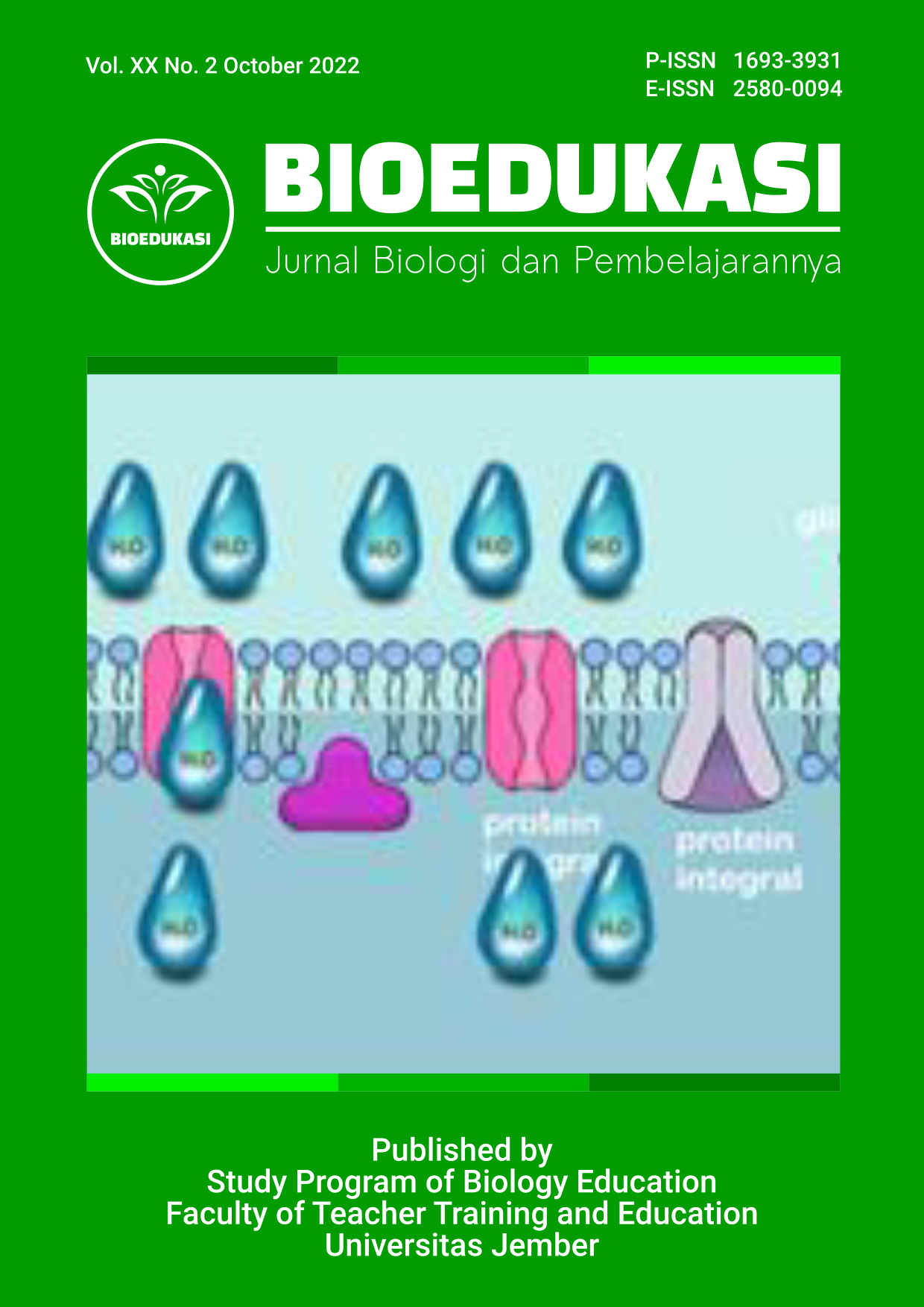LACTATIONAL EXPOSURE OF METHOXYCHLOR IMPAIRS SPERM QUALITY IN BALB/C MICE
DOI:
https://doi.org/10.19184/bioedu.v20i2.34310Keywords:
Estrogenic activity, Lactation, methoxychlor, sperm qualityAbstract
Numerous pesticides derived from human activity are now disseminated in the environment that have been identified as an estrogenic activity that mainly affects the male reproductive system. The objective study was to determine the dose of methoxychlor (MXC) pesticides administered to the mother during the lactation period that would affect the sperm quality of the offspring in mice. Twenty-four BALB/c strains were divided into control and treatment groups. MXC was administered once daily by intraperitoneal to female mice for days 1 to 21 of lactation periods, with 0.14 mg/g, 0.28 mg/g, and 0,42 mg/g doses of MXC. Male litters were killed at postnatal day (PND) 60, and the cauda epididymis was used to observe sperm motility and morphology characteristics. Parameters observed were the number of spermatozoa abnormal and the percentage of progressive spermatozoa. ANOVA showed that the effect of MXC was significantly different in the case of the number of abnormal sperm and the rate of progressive sperm parameters. Duncan's Multiple Range Test (DMRT) showed that D3 (0.42 mg/g) gave the highest effect of MXC on increasing abnormal spermatozoa morphology and decreasing the percentage of motile sperm. These results indicate that exposure to MXC, which showed a physiological response in the lactation period, reduces the sperm quality of offspring




 https://orcid.org/0000-0003-1920-0515
https://orcid.org/0000-0003-1920-0515